Texas Crutch: Smoked Brisket in Foil
On June 19, 2019
This post may contain affiliate links. Please read our disclosure policy.
Smoked brisket cooked using the Texas Crutch method is incredibly juicy and extremely tender. Wrapping your meat in foil during the cooking process ensures it comes out beautifully smoked and full of flavor. This post is sponsored by Reynolds Wrap®.
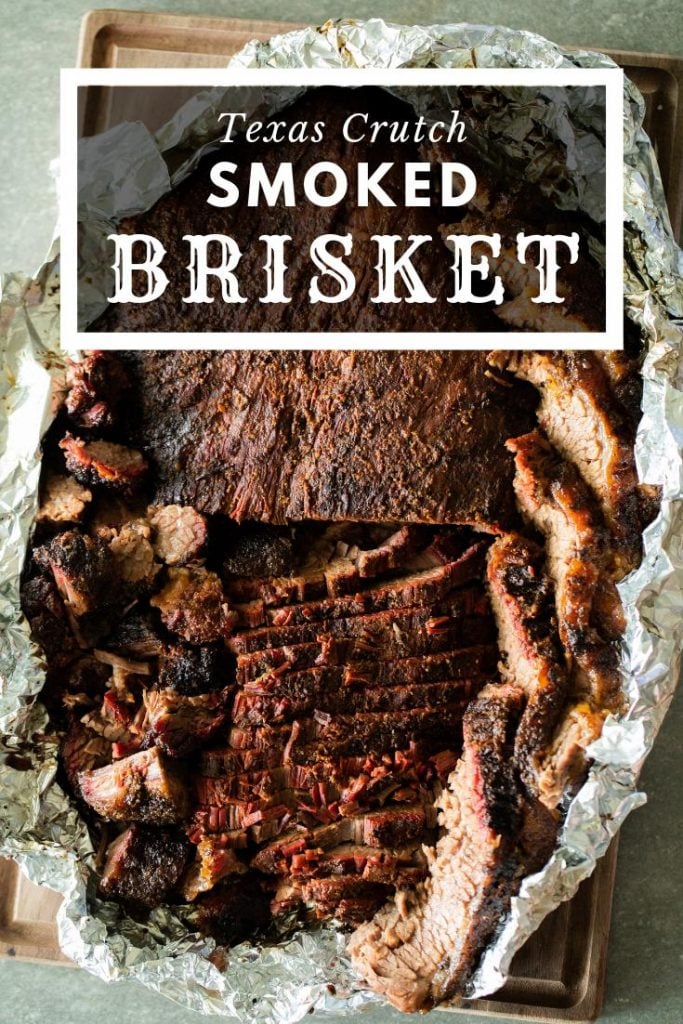
What is the Texas Crutch
The Texas Crutch is a method of wrapping your meat during smoking or slow roasting to speed up the cooking process. It was made popular by the competition BBQ circuit, but it is actively used in a lot of restaurant settings as well.
Using the Texas Crutch is a pretty classic way to make great BBQ. It not only helps to retain moisture and make your meat the juiciest ever, it also works well to get your meat through the often long and arduous “barbecue stall.”
During the summer of 2018, my husband Todd was behind the scenes in the pits of one of the most popular Texas BBQ joints, and they were using foil to crutch their meat because it speeds up cooking time and makes their meat tender and juicy. They clearly know their stuff.
What is The Stall?
Before we continue, let’s take a second to talk about The Stall (AKA The Brisket Stall or The BBQ Stall). This occurs when the internal temperature of your meat reaches between 145 to 175 degrees F where the meat is evaporating liquid, so the meat cools down and it slows the cooking process. Oftentimes, you can get your meat to 145 degrees in a few hours, but from there your meat temperature does not rise, and you are stuck in this 6 to 10 hour period where the meat isn’t increasing in temperature.
Enter The Texas Crutch!
It is during this stall period that pit masters will wrap their meat in either foil or butcher paper to stop the liquid from evaporating and speed the cooking process.
Texas Crutch BBQ
Let’s talk about the benefits of using the Texas Crutch when making some delicious BBQ:
- It decreases your overall cook time. By wrapping your meat during the stall, you are able to get over the hump of waiting for the meat to stop evaporating liquid and begin rising in temperature again.
- You burn less wood. Less time spent burning wood while your meat is just sitting there for those 6 to 10 hours in the stall mean less wood burned (and more saved money for you!).
- It retains moisture amazingly well. The juiciest brisket I’ve ever had came from wrapping the meat in foil during the stall because it retained all the liquid from the beef.
Despite these great benefits, there is one downside to wrapping. Wrapping your meat stops the smoke from continuing to penetrate the meat, and some people say it can soften the exterior bark (the crunchy, crispy outside you get from a long and slow smoke). Despite this, I’ve found a happy medium with allowing your meat to remain in the stall for a time before wrapping it to give you insanely moist meat while maintaining that gorgeous dark bark. I recommend wrapping when the internal temperature of your meat is at about 165 degrees F.
Ready to try out the Texas Crutch on some smoked meat? Try out my recipes for 3-2-1 Ribs or BBQ Smoked Pork Belly to give you a delicious and moist serving of meat without spending hours at the smoker.
Texas Crutch Brisket
For this recipe today, I’ve prepared a delicious brisket using the Texas Crutch method of wrapping with foil. My popular post on Texas Style Smoked Beef Brisket is a similar recipe, except that recipe wraps the brisket in butcher paper. And despite butcher paper gaining popularity and quite a following as of late, I found that wrapping brisket in Reynolds Wrap Heavy Duty Foil is just as delicious and gives you an amazingly juicy brisket.
Brisket wrapped in foil does have one great perk. When you don’t wrap your meat or use butcher paper, all the juices drip away from the meat. If you use foil during the stall period, you get to retain all the juices and your brisket comes out incredibly moist! Not only does your meat contain a good amount of moisture inside, you can use any liquid remaining in your foil to mix into BBQ sauce or to to drizzle on the brisket after slicing.
Tips for Using the Texas Crutch Method
Now that you know the ins and outs of the Texas Crutch method, here are some things to remember to ensure you get the most amazing, juiciest meat of your life.
- Don’t wrap until 165 degrees F. Make sure you wait until the internal temp of your meat reaches 165 degrees F before wrapping your meat. This allows the meat to be in the stall for a bit of time allowing the smoke more time to create a nice, dark bark on the outside of the meat.
- Use high quality Reynolds Wrap® foil. My favorite type of foil for smoking is heavy duty as it insulates well. I like to use extra wide 18″ foil vs. the standard 12″ size because I can lay two pieces overlapping, and then I have a wide enough sheet to completely wrap the brisket to prevent leaking. Reynolds Wrap is also produced using food safety and quality standards, so it’s my go-to.
- Make that foil TIGHT. When wrapping your meat, wrap and secure as tightly as you can. If you wrap loosely, you can end up with liquid that pools at the bottom and then you get a steaming effect inside the foil. When all is said and done, you’ll end up with a brisket better suited for shredding than slicing.
More Beef Brisket Recipes
Now that you know the process of using the Texas crutch to make a tasty brisket, try your hand at some of these other brisket recipes and compare/contrast results to find the recipe that you like best!
Also make sure to check out the video below to see the results of our smoke test where we compared brisket smoked with and without different wraps.
Texas Crutch Brisket Recipe
Follow the recipe and let’s make something delicious! I’m all about helping you make better BBQ, feed the people you love, and become a BBQ hero. If you want to see more of my recipes, tips, and behind the scenes action, follow along on my social channels. You can find me on Instagram, Facebook, and YouTube!
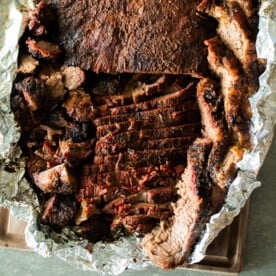
Texas Crutch Brisket Recipe
Video
Ingredients
- 1 12-14 pound whole packer brisket
- 2 Tablespoons coarse Kosher salt
- 2 Tablespoons coarse black pepper
- 2 Tablespoons garlic powder
Instructions
- Trim the brisket. Store your brisket in the refrigerator until you are ready to start trimming. Cold briskets are much easier to work with. Flip your brisket over so the point end is underneath. Remove any silver skin or excess fat from the flat muscle. Trim down the large crescent moon shaped fat section until it is a smooth transition between the point and the flat. Trim and excessive or loose meat and fat from the point. Square the edges and ends of the flat. Flip the brisket over and trim the top fat cap to about 1/4 of an inch thickness across the surface of the brisket.
- Season the brisket. In a mixing bowl or empty spice container, mix the salt, pepper, and garlic. Shake over the brisket to evenly distribute the spices on all sides.
- Smoke! Preheat your smoker to 225 degrees F using indirect heat and hardwood smoke. Place the brisket on the smoker with the point end facing your main heat source. This is a thicker part of the brisket and it can handle the additional heat. Close the lid and smoke until and internal thermometer reads 165 degrees F (usually takes around 8 hours).
- Wrap the beef brisket in foil. On a large work surface, roll out a big piece of heavy duty Reynolds Wrap foil and center your brisket in the middle. Wrap the brisket by folding edge over edge, creating a leak proof seal all the way around. Return the wrapped brisket to the smoker, seam side down so the weight from the brisket crimps the edges of the foil down tight.
- Finish smoking the brisket. Close the lid on the smoker and, maintaining 225 degrees F, continue cooking until the internal temperature of the brisket reaches 202 degrees F in the thickest part of the meat (takes anywhere from 5-8 hours).
- Rest, slice, and serve. Remove the brisket to a large cutting board and allow to rest for 1 hour before slicing. Slice both the point and the flat against the grain with a sharp knife and serve immediately.
Nutrition
Nutrition information is automatically calculated, so should only be used as an approximation.
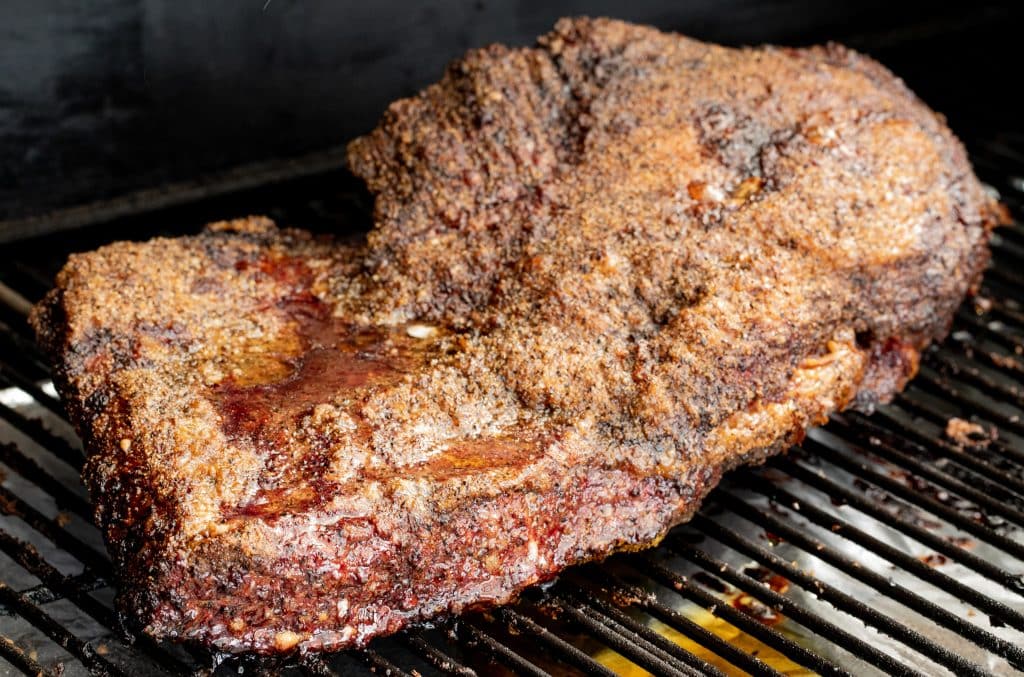
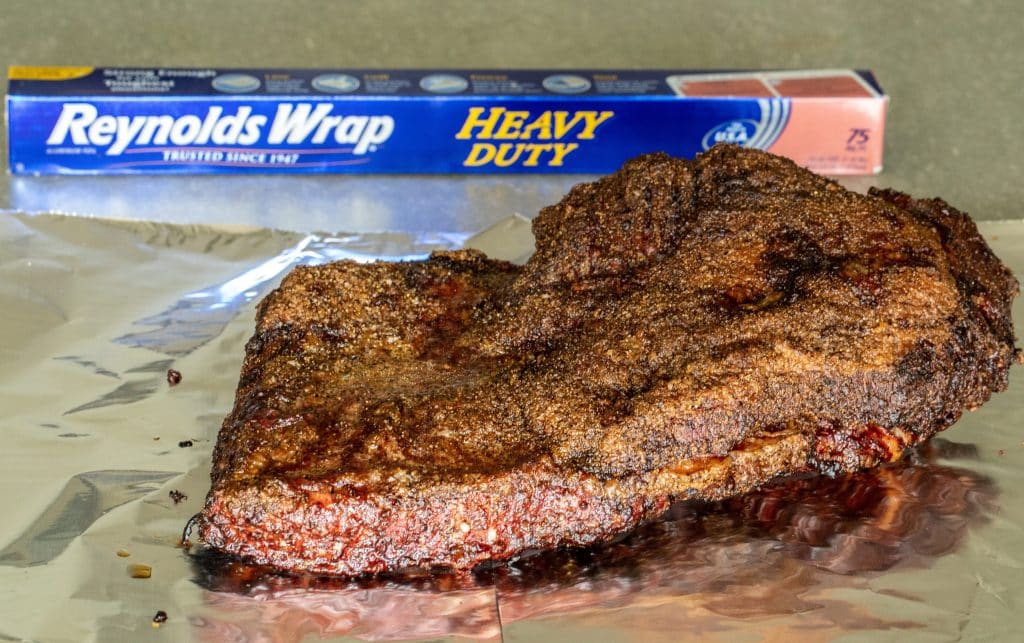
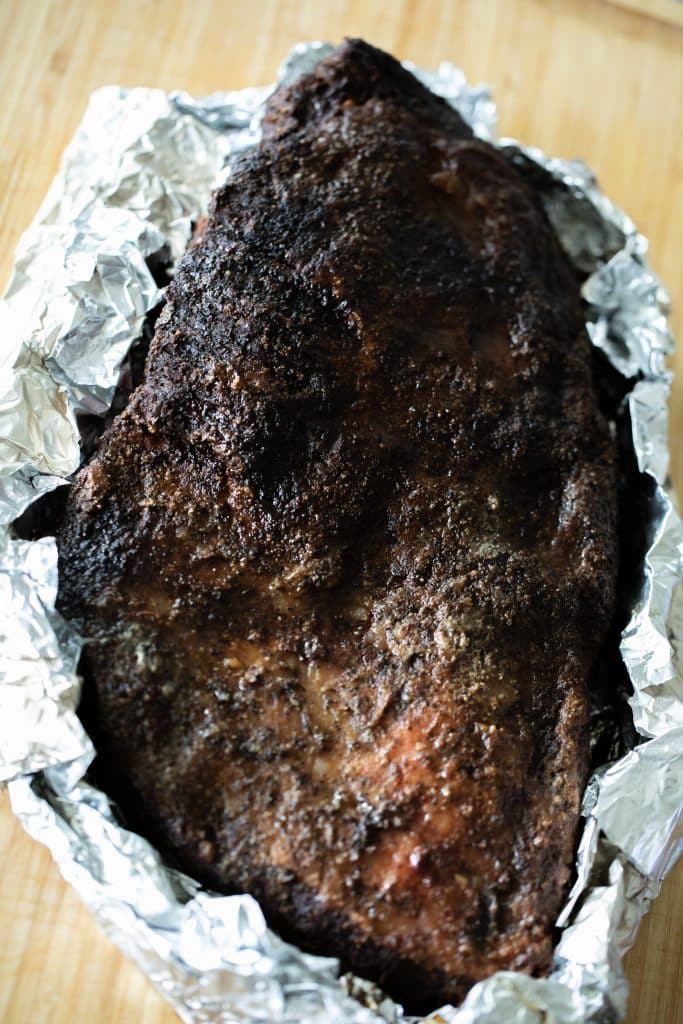
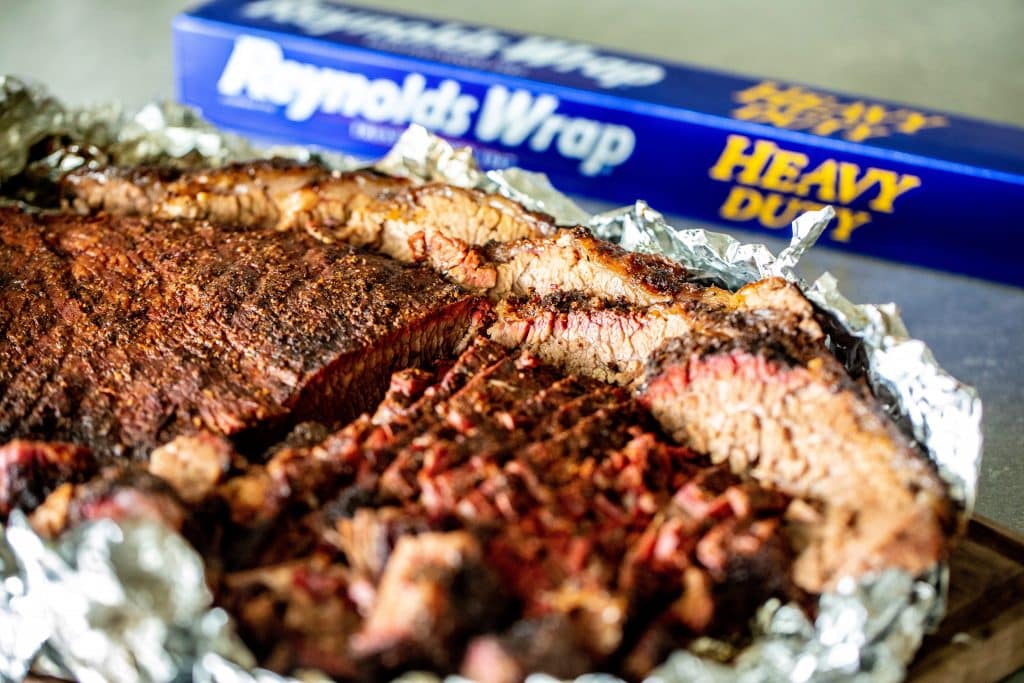
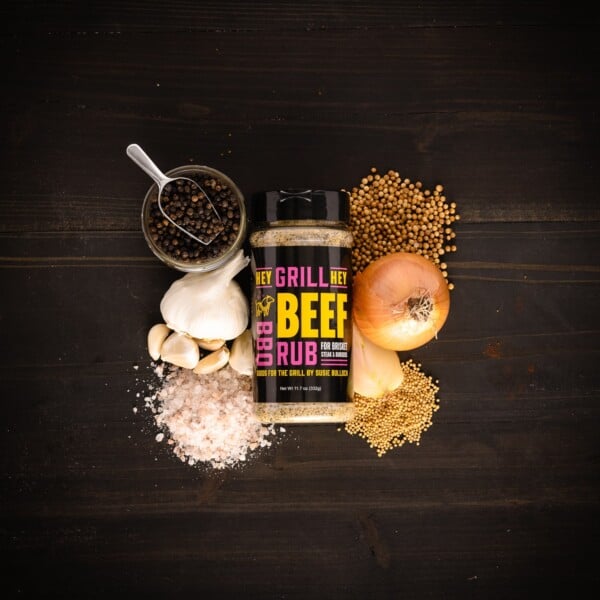
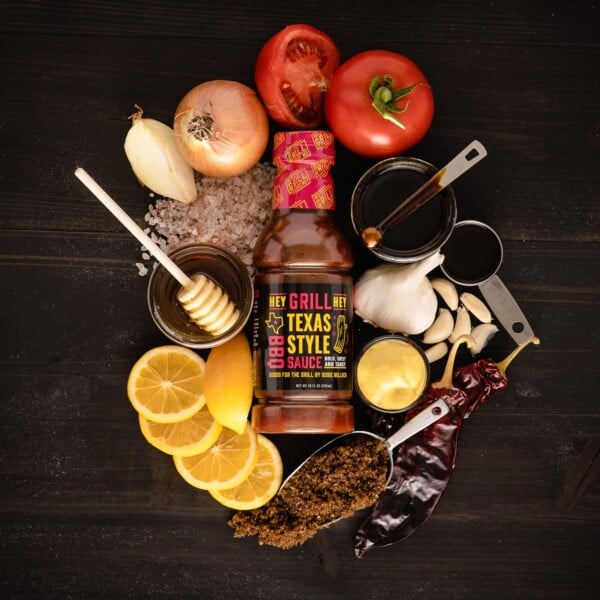
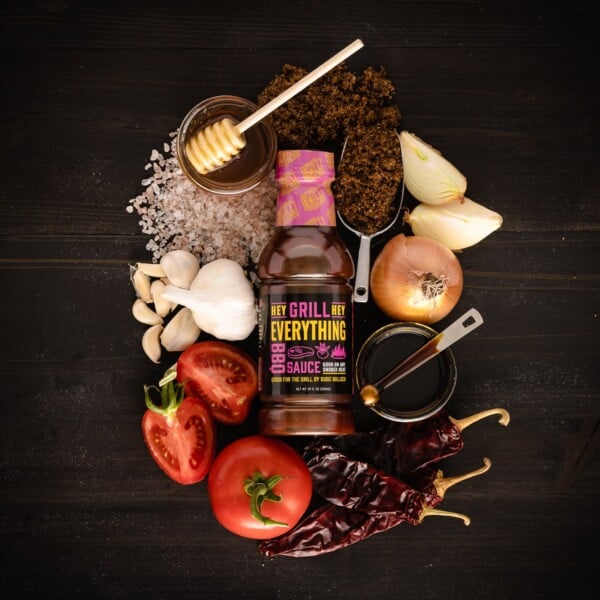
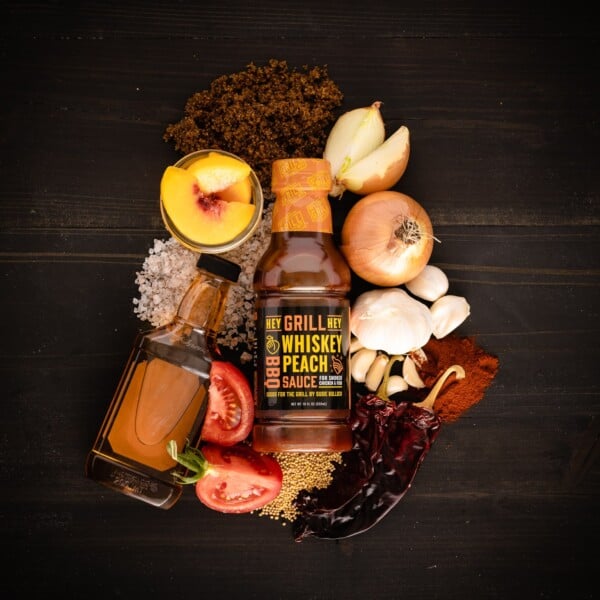

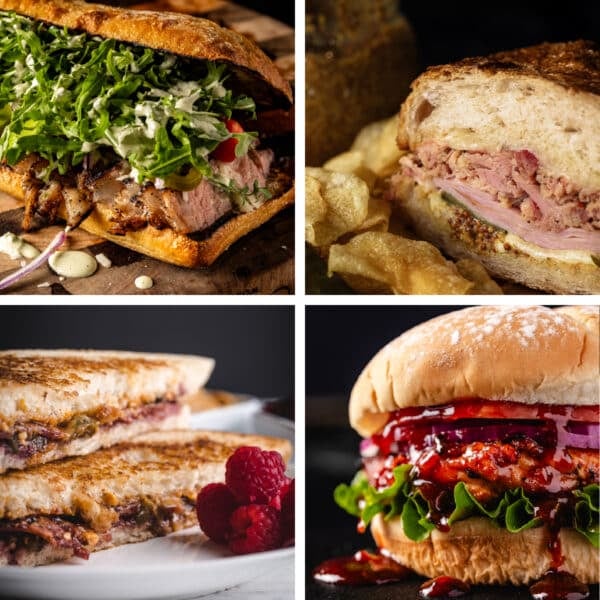
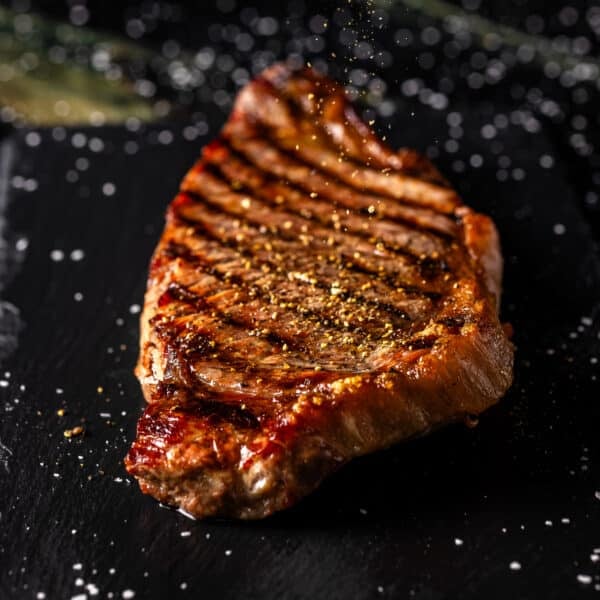
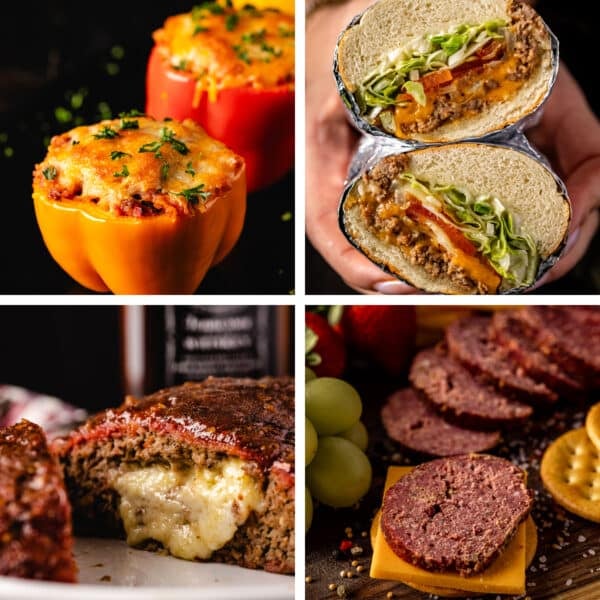
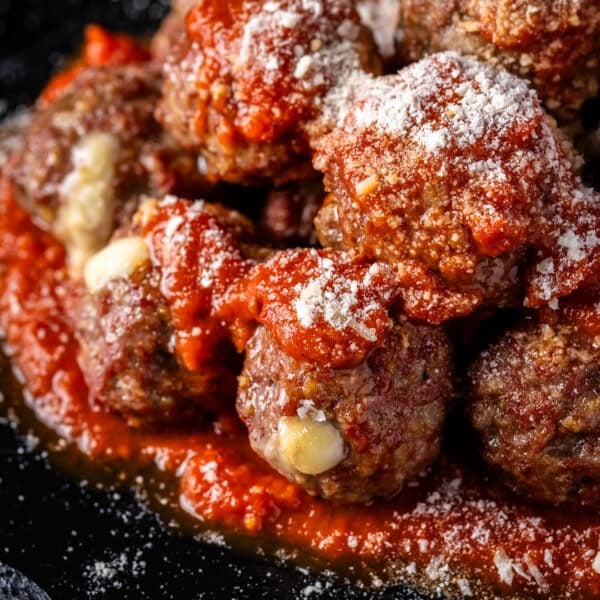





Can I follow this recipe and use my gas grill? I don’t have a smoker.
You technically could, but I wouldn’t recommend. It’s very hard to maintain the consistent temperature you want on a gas grill and this is a long process. You can do it in your oven, but you’ll lose that layer of smoky goodness.
Can I use the same technique for cooking in the oven? I don’t have a smoker. If not, can you provide a recipe for cooking in the oven? My brisket is 17 lbs before removing any fat.
You can follow the same time and temperature guidelines for the oven. You’ll just lose those smoky notes.
This was my first time, cooking a brisket and it turned out perfect. The flavour was amazing. It was so tender. I will definitely be doing this again. I used to put your paper to wrap it this time next time. I’m gonna try with foil to see the difference. It went for a total of 20 hours on my Traeger. I started it at 12:30 at night. The only thing I should’ve done was got my husband to add more pellets before he left for work in the morning because it dropped the temperature for a bit before I got out there to add some.
Version 1: Thank you for providing answers to my unanswered questions in this informative Texas Crutch article and recipe. I’ve watched numerous videos and read various recipes, but there were still some important details missing. Your article has finally covered all the essential aspects of smoking a whole packer brisket.
I’m from Brazil, I really like this channel, I’m roasting the breast here in the oven at home, I leave it for about 3 to 4 hours at 120 degrees. Then I wrap it in aluminum foil, and leave it in the oven for another 4 to 5 hours, and the broth is actually saved there to water the breast later, it’s very tender and with your seasoning